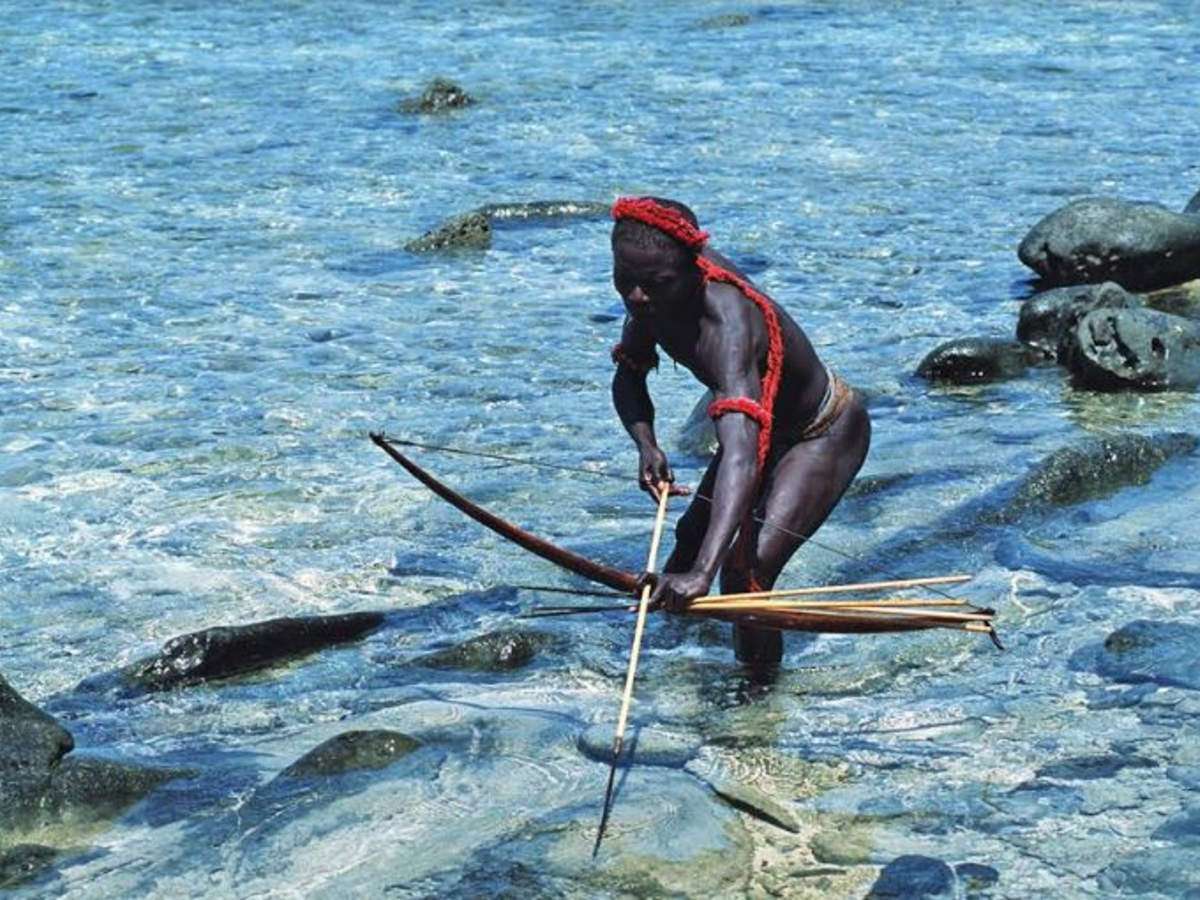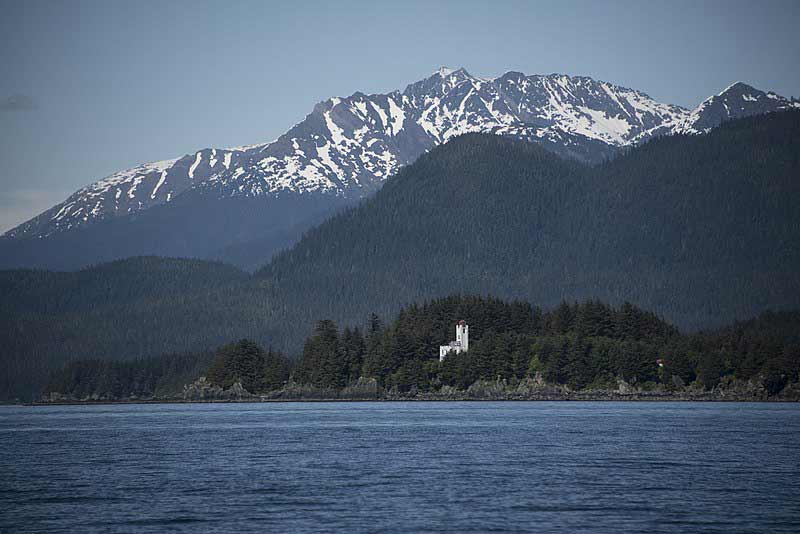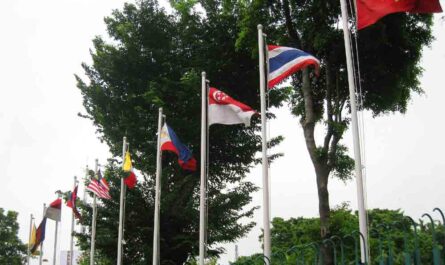North Sentinel Island has many interesting facts to know about. In the grand tapestry of a century defined by the rapid proliferation of technology and the looming specter of nuclear conflict, an astonishing anomaly persists—an isolated enclave where time seems to have stubbornly clung to the Paleolithic era. It stretches the bounds of credulity to fathom, amidst our hyper-connected world, that such a place exists. Enter the Sentinelis tribe, dwelling in seclusion on the North Sentinel Island, nestled within the Bay of Bengal. Their reality is an enigma, for they not only eschew any interaction with the external world but, in a paradoxical twist, fiercely guard their isolation, serving as staunch sentinels against any incursion onto their sacred homeland.
North Sentinel Island Facts That You May Not Know
In unraveling the enigma of the Sentinelis tribe, one confronts a puzzling paradigm that challenges preconceived notions of societal evolution. As the rest of the world hurtles forward into the digital age, the Sentinelis hold steadfastly to their Paleolithic roots. This cultural dissonance sparks a myriad of questions—do they harbor an awareness of the world beyond their shores? What innate wisdom propels them to reject the fruits of modernity? The Sentinelis presents not just a curious anthropological case but a living paradox that beckons explorations into the complexities of human choice, resilience, and the enduring allure of the past in the face of an uncertain future. Let’s find below more about North Sentinel Island facts:
1. Historical Encroachment and Isolation
In tracing the historical trajectory of the Sentinelese people, one discerns a tapestry woven with threads of encroachment and outsider contact, threads that only serve to fortify the tribe’s deep-seated desire for isolation. A poignant chapter unfolded in the late 1700s when the British held sway over the Andaman Islands. In this era, the Indian authorities, perhaps unwittingly exacerbating the tribulations of the Sentinelese, erected a penal colony on Great Andaman Island near North Sentinel Island. This establishment became a conduit for a steady stream of convicted inmates, a human deluge emanating from Burma and India, further entwining the island’s fate with the tribulations of foreign influence.
2. The Krakatoa Signal: An August 27, 1883 Mystery
On the fateful day of August 27, 1883, the world witnessed the thunderous Krakatoa explosion, a cataclysmic event that echoed across the seas. In a peculiar twist of historical irony, the colossal eruption, initially mistaken for a mere gunshot, became an inadvertent distress signal for vessels navigating the perilous waters near North Sentinel Island. This curious misunderstanding prompted a consequential response, leading to a second landing by a figure named Portman.
Portman, spurred by the apparent distress signal, marshaled a search team to embark on a daring mission to the enigmatic island. The team, driven by a sense of duty, left with gifts in tow, a gesture intended to bridge the gap between the modern world and the isolated community on North Sentinel Island. Their journey, shrouded in the mystique of 19th-century maritime exploration, ended with the safe return of the team to Port Blair. These early interactions set the stage for a series of visits to the island recorded between 1885 and 1887, each adding layers to the unfolding narrative of the Sentinelians and their isolated existence.
3. Surviving Nature’s Wrath: The Sentinelians and the Earthquake-Tsunami Duo
The resilience of the Sentinelians was tested in the crucible of natural disaster when a violent earthquake struck, unleashing a devastating tsunami that reshaped the geology of their island home. In the aftermath, as the world grappled with the scale of the catastrophe, the Sentinelians emerged as survivors. Days after the seismic events, the Indian government, employing helicopters for monitoring, observed the islanders engaging in a peculiar response—armed with spears and rocks, they seemed to be adapting to the challenges imposed by the transformed landscape.
The Sentinelians, seemingly undeterred by the upheaval, demonstrated a remarkable ability to acclimate to the altered environment. This silent dance with nature showcased the tribe’s tenacity and resourcefulness in the face of adversity, adding another layer to the complex tapestry of their existence.
4. Unveiling the Arcane: A Mysterious Canopy of Secrecy
The thick, verdant canopy that swathes this tribe’s habitat takes on an almost mystical quality, akin to an arcane tapestry woven by nature itself. Picture an intricate mosaic of emerald leaves, each one a guardian of the tribe’s privacy, casting a mesmerizing play of shadows on the forest floor. The vegetation forms an impenetrable fortress, shielding the community not only from external gaze but also from the relentless march of time.
Within this natural fortress, the tribe’s story unfolds—a narrative concealed beneath layers of foliage. The whimsical dance of sunlight filtering through the leaves becomes a silent witness to their daily lives. Every rustle of leaves echoes the untold tales of this hidden community, creating an atmosphere pregnant with secrets waiting to be unveiled.
5. Invisible Denizens: A Concealed Civilization Thriving Unnoticed
Beneath the sprawling umbrella of this forest-like enclave lies not merely a community but a thriving civilization, invisible to the outside world. The term ‘invisible’ goes beyond physical obscurity; it encapsulates the resilience and self-sufficiency of a person who has mastered the art of thriving in anonymity. They are the epitome of living unnoticed, a testament to the paradox of being both a part of the world and yet apart from it.
This concealed civilization isn’t merely surviving; it’s thriving in splendid isolation, crafting its narrative away from the prying eyes and incessant chatter of the outside world. Their way of life, rituals, and traditions unfold like chapters in an ancient, undiscovered tome—hidden, sacred, and immune to the erosion of time.
6. Island Geography and Scale
Nestled in the expanse of the Bay of Bengal, the Andaman Island chain, a mosaic of 572 islands, forms a geographical bridge between the vast territories of India and Myanmar. Notably, amidst this archipelago, North Sentinel Island emerges as a geographical counterpart to the bustling streets of Manhattan, albeit wrapped in the mystique of untamed nature. Yet, within this archipelagic ensemble, a majority of the islands are diminutive in comparison, painting a canvas of diversity in size and topography.
7. Jurisdictional Complexities
In the complex tapestry of geopolitical boundaries, North Sentinel Island, along with its neighboring counterparts, falls under the jurisdictional umbrella of India, morphing into what is legally recognized as the Union Territory of India. Intriguingly, on the northern fringe of this island chain, a subtle twist unfolds, as a handful of islands find themselves under the sovereign control of Myanmar. The governance of these lands takes on a distinctive flavor, marked by a policy of non-interference, a tacit acknowledgment of the islands’ indigenous inhabitants, and a commitment to preserving their sacrosanct privacy.
8. The Sentinelese’s Ancient Occupation
Tentative assertions about the Sentinelese people’s enduring occupation of North Sentinel Island stretch back countless millennia, a profound timeline that beckons the mind to contemplate the depths of their isolation. Anthropologists and seasoned researchers, delving into the intricate tapestry of human ancestry, propose a genetic affinity between the Sentinelese and the denizens of Africa, rather than their proximity to the Indian subcontinent. This captivating hypothesis tantalizingly suggests a narrative where the island’s pristine shores were first touched by intrepid wanderers navigating the vast expanse from the west coast of Africa, weaving a tale of migration across oceans and epochs.
9. India’s Protective Legislation
The intricate dance between preservation and progress takes center stage in the legislative theater of India, where, in the annals of 1956, the Andaman and Nicobar Islands Protection of Aboriginal Tribes Act emerged as a crucial piece of jurisprudence. This legal artifact solemnly acknowledges the Sentinelese’s fervent desire for solitude, carving a legislative bastion to safeguard their insular existence.
It underscores, in eloquent legalese, the tribe’s right to perpetuate their time-honored traditions while erecting an impermeable barrier against the encroachment of the Western “death-pox.” An act conceived not just in ink and parchment but in the compassionate acknowledgment of the delicate equilibrium between cultural preservation and the relentless march of modernity.

10. Coconut: A National Treasure with Fragile Connections
Coconut, considered a national gift, stands as a resilient emblem amidst the tumultuous attempts by the government to establish contact with the enigmatic North Sentinel Islands. Local supporters, vehement in their opposition, have staged protests, weaving a narrative of resistance against national outreach. This resistance, based on the rationale that such interactions pose a high risk to both parties involved, has effectively severed the ties between the islands and the rest of the nation. Yet, in the shadow of this isolation, sporadic checks persist via boats, functioning as a delicate balance between ensuring the safety of the tribes and respecting their choice to remain secluded from the outside world.
11. Navigating the Perils: Nineveh’s Encounter in 1867
In the annals of history, a pivotal moment unfolded in 1867 when a vessel, later identified as the Indian merchant ship Nineveh, encountered the formidable shores of North Sentinel Island. This maritime encounter, rife with danger, brought 106 surviving passengers and crewmen face to face with the island’s indigenous people. These unsuspecting individuals inadvertently played a crucial role in repelling a potential invasion, a testament to the island’s ability to guard its secrets. Fortunately, a rescue team from the Royal Navy eventually intervened, ensuring the safe return of those who had unwittingly trespassed into the island’s guarded domain.
12. Unveiling the Enigma of North Sentinel Island
Since the year 1996, a peculiar policy has been embraced by the Indian government, one that refrains from meddling in the affairs of the Sentinels, an isolated tribe dwelling on the enigmatic North Sentinel Island. Remarkably, despite this official stance of non-interference, any endeavors to venture onto the island have been met with an unprecedented degree of success. The indigenous tribe, shrouded in mystery, has cautiously allowed outsiders to establish initial contact, a window of interaction limited to a mere 23 minutes.
In 1991, a pioneering encounter was orchestrated by a five-member team under the leadership of anthropologist S.A. Arundari, marking a pivotal moment in the annals of North Sentinel Island’s history. This historic interaction was predominantly conveyed through gestures, a silent dialogue spanning secure distances, and punctuated by the exchange of gifts. A prior attempt in 1967 by a group of scientists led by anthropologist TNN Pandit to set foot on the island, however, failed to foster any enduring friendly contact.
13. Vibrant Sentinels: A Healthy Enigma
In stark contrast to the concerted efforts of the great Andamanese to steer towards civilization, the Sentinels emerge as a paradox. Far from resembling a community tethered to a bygone era, these islanders exude vitality and prosperity. From a distant vantage point, the Sentinels present a tableau of strength and well-being. Eyewitness accounts weave a narrative of a populace marked by robust health, with murmurs of children’s laughter and the presence of pregnant women casting aside preconceived notions of a primitive existence. This vibrant display of life defies the stereotypical image of a stagnant, ‘stone age’ society, challenging onlookers to reassess their perceptions of the Sentinels.
14. Unveiling Hidden Tribes: Exploring the Unknown
In the annals of human exploration, certain teams have remained shrouded in mystery until the relatively recent past. A striking example is the Lacondon tribe, nestled within the enigmatic folds of the Mexican Yucatan Peninsula. It wasn’t until the year 1924 that this indigenous group made its initial contact with outsiders, unraveling a tapestry of cultural richness that had eluded the gaze of the wider world for centuries.
Similarly, casting our gaze on the sunburnt expanses of Western Australia, we encounter the Pintupi tribe. Astonishingly, their existence remained a well-kept secret until the year 1984, when the veil of obscurity surrounding this community was finally lifted, exposing a heritage that had silently thrived in isolation.
15. Beyond Sentinels: The Veiled Existence of Isolated Societies
The Sentinelese tribe, while capturing global attention for their unwavering isolation, stands as but one facet of a broader phenomenon. As we peer into the early folds of the 2010s, revelations surface that unveil the existence of approximately a hundred distinct groups of uncontacted individuals. These enigmatic communities, scattered across the vast expanse of the Amazon rainforest, the rugged terrain of New Guinea, and the secluded embrace of remote islands, remain steadfastly disconnected from the pulsating rhythms of the modern world. Their tales, hidden in the foliage of unexplored landscapes, hint at narratives untouched by the march of progress.
16. Guardians of the Unseen: Navigating the Territories of Isolation
Delving into the efforts to understand and document these isolated societies, a particular modality emerges – observation from a respectful distance. The meticulous collection of information has often taken the form of discreetly navigating the waters surrounding the chosen island or territory. A cautious strategy, born out of respect for the autonomy and privacy of these secluded communities, has been adopted.
The islanders, often labeled as hostile due to their guarded existence, have witnessed rare instances of diplomacy. Occasionally, the Sentinels, as they are aptly named, have permitted authorities to approach, forging a fragile alliance in exchange for coveted resources such as coconuts. These limited encounters offer glimpses into the delicate balance between the desire for understanding and the preservation of untouched worlds.
17. The Devastating Impact of European Diseases
In the intricate tapestry of historical encounters, the arrival of British explorers on the shores of the Sentinalese people inadvertently unraveled yet another grim chapter: the onslaught of diseases. European illnesses, to which the native populations held no intrinsic immunity, manifested as silent invaders, mercilessly decimating the once-thriving Sentinalese community.
The virulent trio of measles, smallpox, and influenza, along with the silent lethality of pneumonia, surged like an uncontrolled wildfire through the vulnerable veins of native tribes living in proximity to the British colonists. The consequence was a tragic symphony of suffering, as diseases from distant lands claimed lives and altered the very fabric of Sentinalese existence.
18. Survival Amidst Peril
While the Sentinalese people managed to withstand the encroachment of settlers, explorers, and prisoners, the specter of diseases continued to loom ominously over their secluded lives. The resilience displayed in the face of territorial infringements and health calamities attested to the formidable strength embedded in the Sentinalese culture.
Yet, surviving the onslaught of external forces did not render them impervious to the subtle, enduring impacts left by visitors from the outside world. An incident in the annals of 1880, an indelible mark, cast a shadow that would define their subsequent interactions with outsiders, shaping a policy that endures in the intricate dance between the Sentinalese and the rest of the world.
19. The Turning Point of 1880
Within the labyrinth of history, the year 1880 emerges as a pivotal juncture, etching its significance into the very soul of Sentinalese existence. An incident unfolded, an echo of which resonates through time, leaving an indelible imprint on the collective memory of the Sentinalese people. The particulars of this episode shrouded in the mists of the past, become a focal point for understanding the guarded stance the Sentinalese adopted towards outsiders.
This turning point solidified the foundations of a policy, a defensive shield, that shields the Sentinalese from external intrusion. The echoes of 1880 reverberate in the unwavering determination of the Sentinalese to maintain their isolation, an isolation born from a lesson learned in the crucible of a defining historical moment.
20. Linguistic Enigma and Austroasiatic Roots
The linguistic landscape of the Sentinelese people remains shrouded in mystery, with linguists grappling to pigeonhole their language into recognized dialects. However, amidst the linguistic enigma, an intriguing revelation has emerged. The native denizens of the southern reaches of the Andaman Island chain, to which the Sentinalese belong, are ethnically Austroasiatic. Remarkably, their linguistic tapestry shares threads with the Vietnamese tongue.
This linguistic affinity serves as a testament to the intricate interweaving of cultures across vast expanses, transcending geographic barriers to echo the words spoken by these isolated islanders.
21. Assimilation and Cultural Erosion
In a tragic parallel, the fate of the Great Andamanese people, kin to the Sentinelese, unfolds as a cautionary tale of assimilation into the broader Indian lifestyle. The currents of change swept them into a sea of cultural erosion, where the waves of assimilation gradually wore away the bedrock of their native traditions and rich cultural tapestry. In the relentless tide of adaptation, the Great Andamanese lost not just a language but an entire lexicon of cultural expressions, a repository of customs and rituals. The assimilation, however, stands as a stark contrast to the Sentinelese’s steadfast determination to cling to their cultural moorings amidst the swirling currents of historical change.
22. Legacy of Isolation
The consequence of that fateful incident has woven itself into the very essence of Sentinalese society, creating a legacy of isolation that persists into the contemporary era. The tendrils of this isolation extend beyond the physical realm, permeating the Sentinalese psyche, and shaping their perceptions and reactions to the outside world.
The legacy is not merely one of physical seclusion but is an intricate tapestry of cultural resistance, a testament to the resilience of a people who have weathered the storms of history. In the face of globalization and the relentless march of time, the Sentinalese continue to stand as a living testament to the enduring impact of historical moments and the unwavering spirit that emerges from the crucible of adversity.
ChatGPT can
23. Distinctive Adornments and Roles
The tribes’ aesthetic expressions and sartorial choices offer further insights into their cultural tapestry. Women, adorned with tight strings encircling their waist, neck, and head, showcase a distinctive form of self-expression that binds them to a shared identity. These strings, laden with cultural significance, become not just accessories but symbolic threads weaving together the communal fabric.
Conversely, the men, bearing the mantle of hunters and protectors, are adorned with a different array of accessories. Spears, arrows, and other primitive weapons are wielded with a sense of purpose, their significance extending beyond mere tools of survival. The men’s attire mirrors a parallel aesthetic, as they too wear a type of string, albeit with a denser waist belt that provides practical support for the arms, emphasizing the dual roles they play in both sustenance and defense.
24. Military Vigilance: “Eyes On, Hands-Off”
In the maritime ballet of the Andaman Island chain, where azure waves caress the shores, the Indian navy orchestrates a careful symphony dictated by an official policy known as “eyes on, hands-off.” A strategic choreography unfolds as military sentinels station themselves to watch, unwavering gazes fixed upon North Sentinel Island.
Their mission: to guard against the trespass of outsiders onto the sacrosanct shores while deliberately abstaining from any direct interaction with the Sentinelese. The naval ballet, executed with precision, encapsulates a delicate dance where vigilance meets restraint, respecting the unspoken pact between modern civilization and the enigmatic guardians of North Sentinel Island.
25. Cultural Mosaic and Historical Isolation
The chronicles of the Andaman Islands echo with the whispers of antiquity, yet their embrace by the outside world was a gradual revelation. It was not until the British Golden Age of Exploration, spanning from the 15th century to the early 1600s, that these emerald isles began to unfold their secrets to outsiders.
British explorers, draped in the garb of adventurers and missionaries, embarked on perilous journeys to unravel the mysteries of these uncharted realms. Their mission encompassed a trifecta: the quest for riches in foreign soils, the expansion of the burgeoning British Empire, and the dissemination of Christianity across unexplored landscapes.
26. Legacy of Exploration
The corridors of time reveal how the isles, now embedded in modern geopolitics, were once a blank canvas awaiting the strokes of discovery. During this epoch of exploration, intrepid British souls traversed treacherous waters, navigating the unknown with a confluence of ambition, avarice, and religious zeal. These pioneers etched their tales into the annals of history, intertwining the fate of these islands with the broader narrative of global exploration.
Their footprints, both indelible and forgotten, marked the inception of a connection between the Andaman Islands and the far-reaching tendrils of British influence, a legacy that endures in the cultural fabric of this enigmatic archipelago.
27. Silent Census: The Island’s Mysterious Population Riddle
The island harbors an enigmatic puzzle that perplexes those who seek to understand the intricacies of this secretive tribe—the mystery of their population. It’s not just an absence of census data; it’s a deliberate evasion, a conscious effort to elude the statistical grasp of the world. The island, like a silent sphinx, guards its secrets, leaving the global community to grapple with the uncertainty of numbers and demographics.
In this statistical void, speculation runs rife. Some hypothesize that the tribe deliberately manipulates its numbers to maintain the mystique, while others believe the island itself possesses a mystical influence that distorts any attempt at enumeration. The unanswered question of population becomes a tantalizing enigma, drawing the curious and the scholarly alike into a labyrinth of conjecture and fascination.
28. Geography and Topographical Changes on North Sentinel Island
Situated in the Bay of Bengal, North Sentinel Island, akin in size to Manhattan, spans approximately 59.6 square kilometers. In a remarkable event in 2004, the island underwent a transformative shift in its topography due to a tsunami, elevating certain areas by one to two meters. This alteration, particularly notable in the west and south, led to an intriguing development: a linkage between the main island and a coastline previously situated approximately 600 meters away from what was known as Constance. This geographical evolution added a layer of complexity to the already enigmatic North Sentinel Island.
29. The Tragic Encounter of John Allen Chau
On the fateful day of November 17, 2018, North Sentinel Island gained worldwide attention when the Sentinelese people, an isolated tribe residing there, became entwined in a tragic incident. The catalyst for this international focus was the killing of an American missionary, John Allen Chau. The circumstances surrounding Chau’s demise shed light on the complex dynamics of the Sentinelese’s secluded existence. Chau, in blatant violation of the tribe’s strict no-visitors policy, engaged in an illicit arrangement with local fishermen, bribing them to transport him to the elusive North Sentinel Island. This unfortunate event not only claimed a life but thrust the Sentinelese people unwillingly into the global spotlight, a place they vehemently resist occupying.
30. Obscurity of North Sentinel Island
If North Sentinel Island elicits little recognition, you are not alone. This obscure landmass, nestled in the Andaman Island chain, remains largely unknown to the broader populace. In the vast expanse of the Bay of Bengal, an arm of the Indian Ocean, North Sentinel Island asserts its presence as one of the more substantial islands in this archipelago. Despite its size, it maintains an aura of secrecy and seclusion, a speck on the world map that holds within its bounds a unique and mysterious tale.
31. Unprecedented Technological Advancements vs. Paleolithic Preservation
In an epoch where technological progress unfolds at an unprecedented pace, with artificial intelligence, space exploration, and quantum computing capturing headlines, the mere existence of a tribe embracing the Paleolithic epoch presents a paradoxical tableau. Picture a world enthralled by the relentless march of innovation, juxtaposed against a minute pocket of humanity choosing to defy the tides of time.
The Sentinelis tribe emerges as living relics, encapsulated in an era long surpassed by the relentless march of progress. The coexistence of these two divergent timelines ignites curiosity, sparking contemplation on the choices made by the Sentinelis, standing in stark contrast to the global trajectory of advancement.
32. The Mystique of North Sentinel Island
Tucked away in the embrace of the Bay of Bengal, North Sentinel Island shrouds itself in an aura of mystique. It is a realm where the eons unfold with an almost surreal detachment from the swiftly evolving outside world. The verdant landscape of the island conceals not just the physical abode of the Sentinelis but a fortress of ideology that resists the encroachment of modernity.
The island becomes a crucible of untouched natural beauty, a sanctuary for a tribe insulating itself from the currents of globalization. The allure of North Sentinel lies not only in its geographical isolation but in the potent symbolism it embodies—an emblem of unyielding resistance against the homogenizing forces of the contemporary era. Buy Textbooks. Sell Textbooks. eTextbooks. Most Used Textbooks On the Planet. 10 million books. 50% Cash Back Books. FREE Shipping
33. Sentinelis Tribe as Guardians of Isolation
Venturing into the heart of North Sentinel Island, one encounters not just a community but a custodian of isolation. The Sentinelis tribe, with an almost mythical fervor, serves as the guardians of their secluded existence. They stand as silent sentinels, warding off any potential intrusion into their ancestral domain. The motivations behind this fervent isolation remain shrouded in mystery. Is it an instinctual aversion to the unknown, a conscious rejection of external influences, or perhaps a testament to an unwavering commitment to the preservation of their unique way of life? The tribe’s role as protectors of isolation unfolds as a testament to the tenacity of cultural identity in the face of an ever-shifting global landscape.
More Interesting Articles
- 60 Interesting Facts about Kathmandu City Nepal
- 30 Interesting Facts About the Flag Of Scotland
- 15 Interesting Fun Facts – Everland Theme Park, South Korea
- 75 Awesome Washington DC USA Interesting Fun Facts
- 70 Archipelago Ibiza Spain Interesting Fun Facts Trivia
- 33 Gyeongbokgung Palace South Korea Interesting Fun Facts
- 29 Andaman and Nicobar Islands Interesting Fun Facts
- 40 Irish Saint Patrick’s Day Interesting Fun Facts
- 25 Interesting Fun Facts About Nami Island South Korea
- 89 Wonders of the World One Must See in Lifetime
- Cultural Wonders of the World – A Complete List
- 22 Pashupatinath Temple Nepal Interesting Fun Facts
- List of 54 Greatest Empires in Entire History Timeline
- 100 United Nations Facts – The UN Basic Facts for All
- 100 Plateau of Tibet Facts to Astonish You
- 200 Kazakhstan Fun Facts Everyone Should Know
- 125 Interesting Facts about Hungary You Must Enjoy
- 200 Interesting Facts about Poland for Travelers
- 200 Cool Facts about Germany to Surprise You




